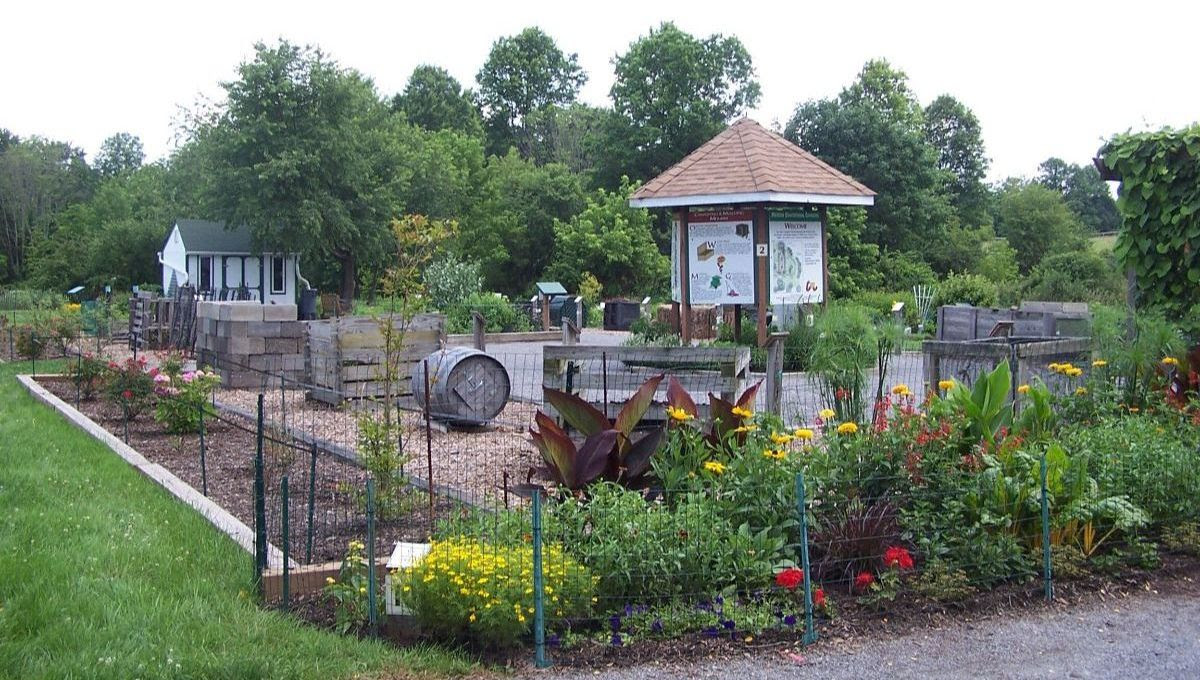
Compost area at the Mercer Educational Gardens. Photo: mgofmc.org
By Myara Gomez | The Signal
This story was produced in collaboration with The Signal (TCNJ) and CivicStory as part of the Ecology-Justice Reporting Fellowship.
Nobody wants to be wasteful, but not everyone knows how to reuse their leftovers. Luckily, starting a compost bin is an easy practice to start at home.
Composting is the process of recycling organic matter into a homemade fertilizer. Bacteria, fungi, and protozoa convert decomposing food and plant waste into a mixture that is rich with organisms that reduce one’s need for pesticides, combat soil erosion, and help soil retain nutrients. The result is more than just free fertilizer; healthy soil is an essential climate solution, lowering greenhouse gas emissions and supporting robust biodiversity.
Though the process is simple, there are some rules to composting. Items such as meat products, bones, animal feces, and dairy products can’t be composted because they risk developing harmful bacteria while also attracting pests. Diseased plant material must carefully be removed to avoid contaminating the entire garden. Compost bins need oxygen, water, food, and shelter to thrive, which is why leftovers, leaves, and lawn trimmings are great items to start with. Temperature is an important factor as well, as organic material decomposes much faster in the heat.
The Mercer Educational Gardens in Pennington, NJ have set out to teach people about at-home composting methods. The gardens are home to 21 compost areas, many of them quite different. One composting area consists of cinder blocks stacked into a bin shape; one uses tightly wrapped chicken wire. Another uses hay bales. Each setup holds compost just fine, demonstrating how most folks can use what they have in setting up an at-home composting system.
“You can do it with as little resources as you want. It can be done just about anywhere and with just about anything,” said Mercer County’s Horticulturist Justine Gray.
Once compost is placed in a receptacle—preferably outside the house—it becomes a matter of patience. Items need to be left there to decompose and turned, or stirred, once a week to balance out the decomposition process. Eventually, the contents of the bin stop giving off heat and begin to look like soil. Just add between four to six inches of the compost into your garden bed, and you are now free to start planting.
Gray urged at-home composters to keep an eye out for insects—some are decomposers and some are not. She identified worms and various ant and beetle species as the most desirable inhabitants of a compost bin, stressing that non-native insects can completely ruin the ecosystem.
The Mercer Gardens offer another useful template: group composting. As the compost area is only accessible to volunteer staff and master gardener interns, it represents a controlled process that harnesses the efforts—and waste—of many. Their interns, all Rutgers University students, are tasked with maintaining their compost bin all year long. “It’s better as a group effort than just one person’s banana peels,” explained Gray. Though many local governments have implemented composting programs, the Mercer Gardens show that steps can be taken just as easily by community members who are tired of waiting.
While it seems basic, composting is an essential way of reducing waste, improving our soil’s health, and supporting a healthier ecosystem. But Gray explained that the reasons for composting don’t need to feel so grand: “It also improves your home gardening—which is always fun.”

Myara Gomez is a junior at The College of New Jersey. She is a staff writer for The Signal (TCNJ) and a CivicStory Reporting Fellow. This story was produced in collaboration with The Signal and CivicStory as part of the Ecology-Justice Reporting Fellowship.

